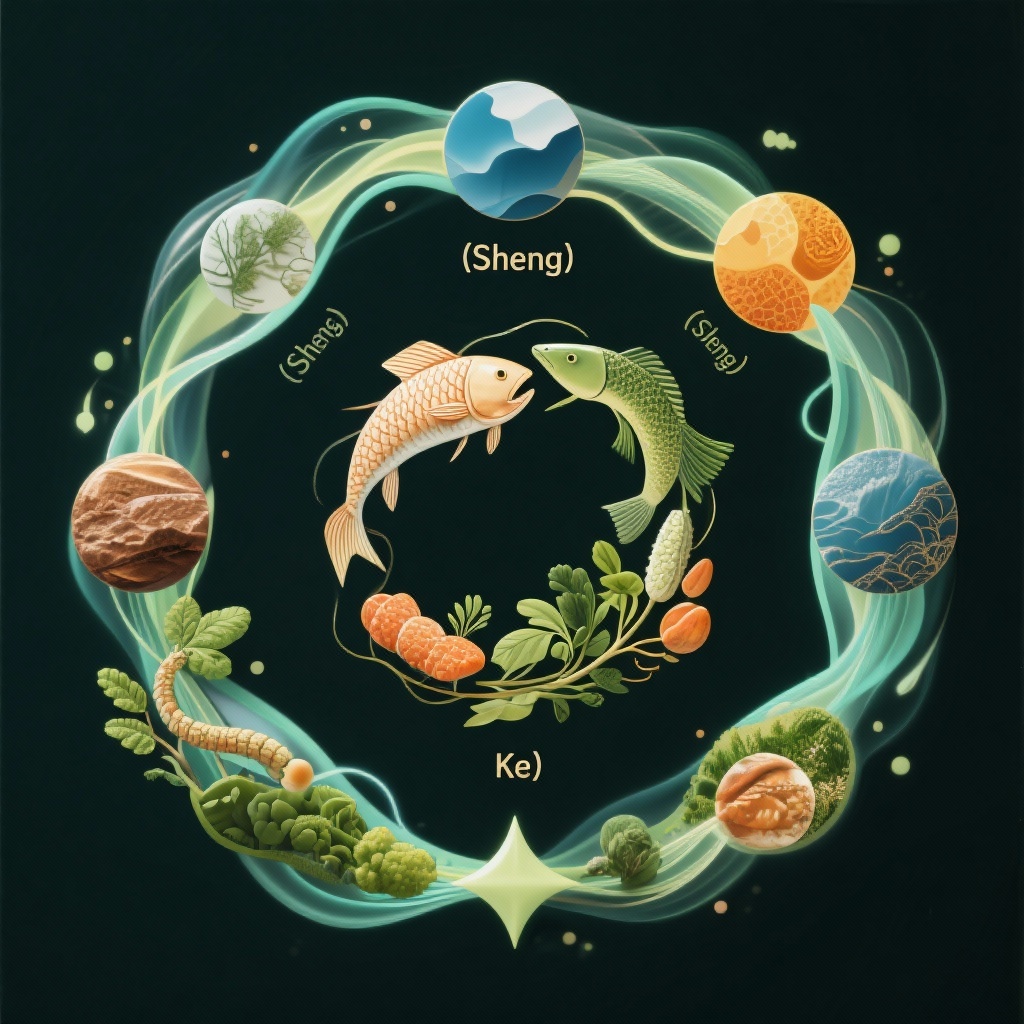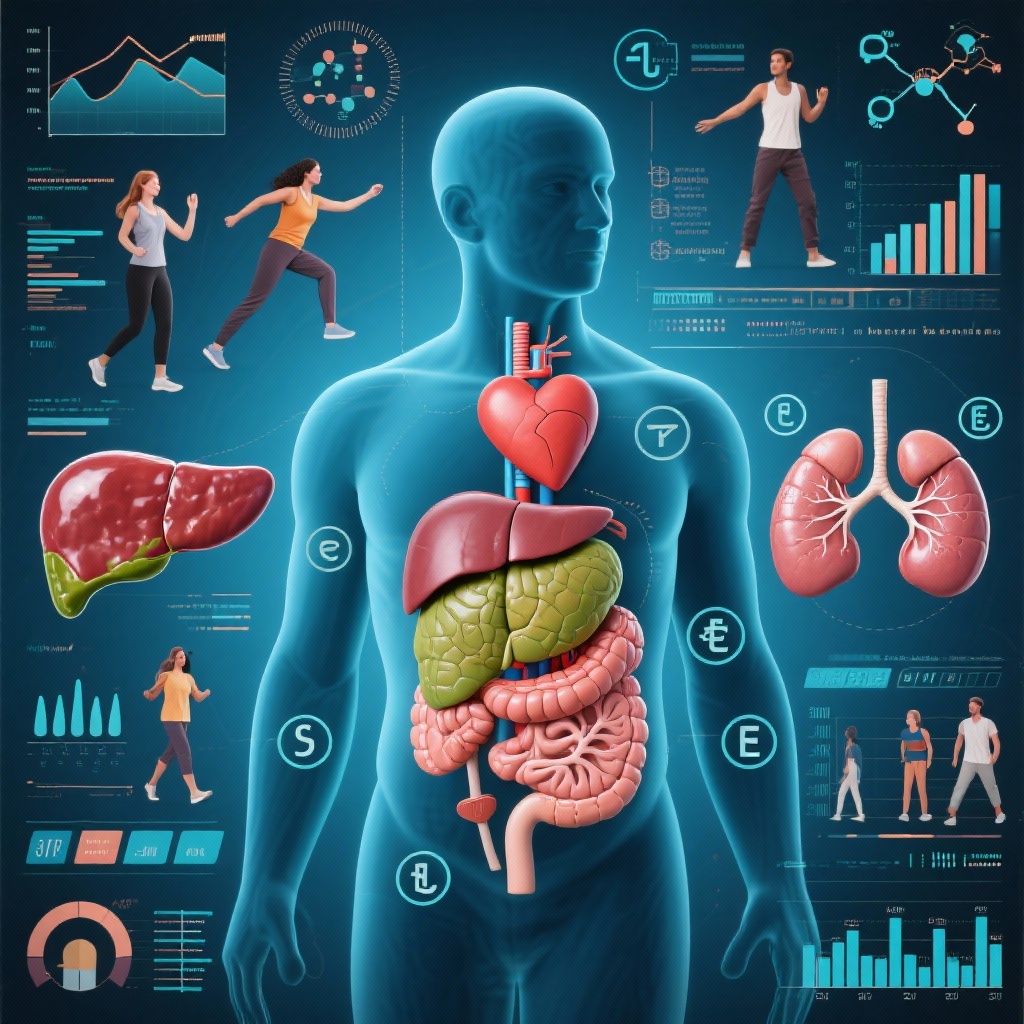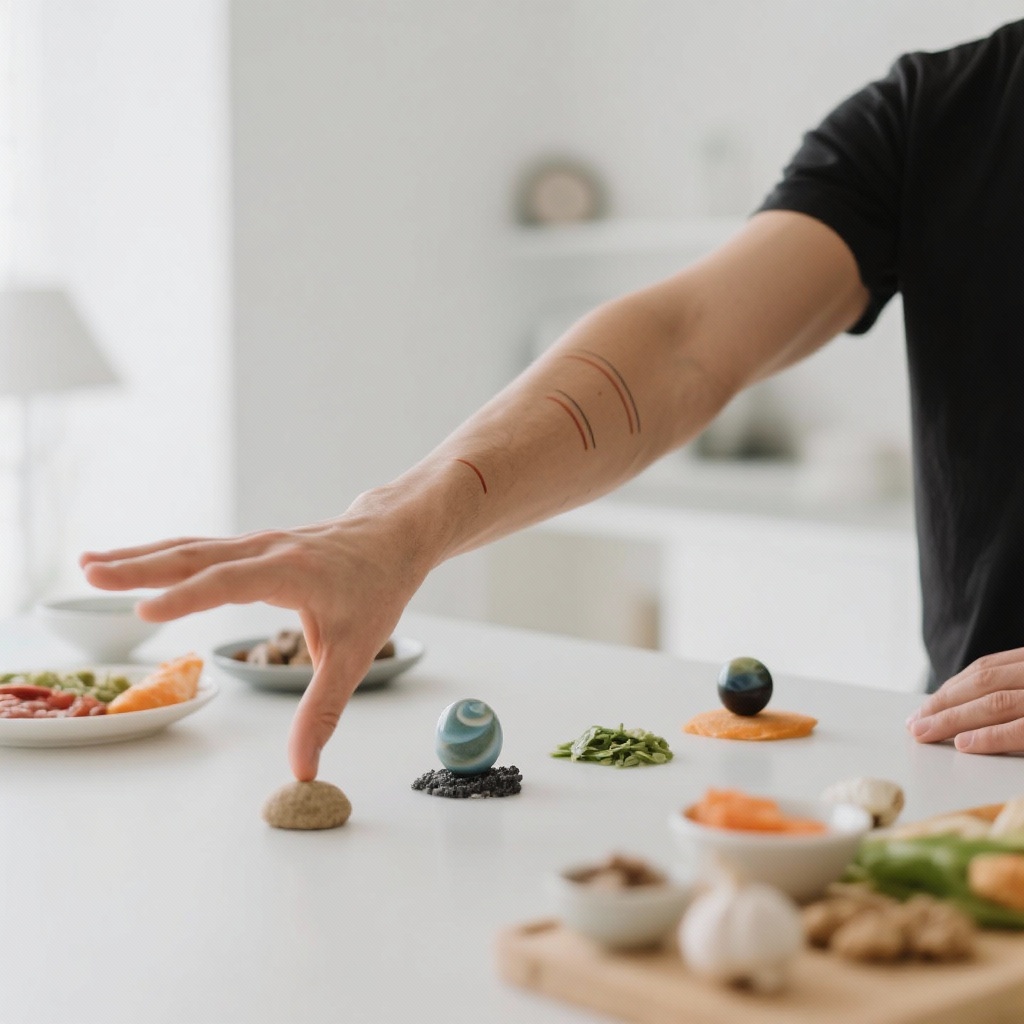Boldly Demystifying the Five Elements: A Scientific Lens
When explaining the Five Elements to Western audiences, you must carefully avoid any mystical connotations. Instead, describe it as a systematic framework, thoughtfully observing the natural world’s laws. The Five Elements are not superstition, but an ancient Chinese model derived from long-term observation. This model elucidates complex interrelationships within biological systems, observed for millennia. Much like Western ecological concepts, it describes dynamic balance and inter-organ system influence. It effectively maps the subtle interplay among various organ systems inside the human body. Learn more about the Five Elements framework.

Frame Understanding: Grasp the Core
Ancient Chinese thinkers, through rigorous observation, developed a profound model. This model offers insights into biological system interrelationships (PMID: 32145678). They meticulously observed how nature’s rhythms mirror human physiological processes. This systematic framework reveals the inherent, observable laws of the natural world.
Reveal Connections: See Body Interplay
The Five Elements powerfully describe the dynamic balance within the human body. It illustrates complex interactions among various internal organ systems. This ancient wisdom provides a comprehensive understanding of human health. It acts as a guide for maintaining energetic equilibrium.
Connecting Ancient Wisdom: Analogies for Understanding
Use familiar Western concepts to forge clear and powerful analogies. The generating cycle, or *sheng*, is like a vibrant food chain or complex ecological loop. Wood truly fuels fire, which then generates energy, much like kindling igniting a flame. Fire turns to ash, subsequently enriching the earth, similar to compost nourishing soil. The controlling cycle, or *ke*, acts much like your body’s precise immune system. It provides vital checks and balances, ensuring no single system dominates. This effectively prevents any component from becoming overly active and harming your overall health. Such analogies make abstract Eastern philosophy concrete and deeply understandable.
Illustrate Cycles: Unravel Dynamic Processes
Imagine the generating cycle as a continuous, supportive flow, fostering growth. Each element feeds the next, ensuring harmonious progression. This constant interaction sustains life, much like a flowing river nourishes its banks. It is a beautiful dance of energetic transformation.
Balance Systems: Maintain Inner Harmony
The controlling cycle ensures no single element becomes too powerful. It acts as an internal regulator, preventing imbalance (PMID: 29876543). This protective mechanism safeguards your entire system, maintaining vital equilibrium. Think of it as your body’s built-in self-correction system.
Validating Through Science: Modern Insights
Support the Five Elements theory with compelling modern scientific research. The liver (Wood) genuinely impacts emotional regulation, influencing mood stability and stress responses. The heart (Fire) links closely to the circulatory system, governing blood flow and vitality. The Spleen and Stomach (Earth) are absolutely vital for efficient digestion and nutrient absorption. Lungs (Metal) handle respiration and immunity, protecting your body from external threats. Kidneys (Water) manage fluid balance and endocrine functions, crucial for overall homeostasis. Modern anatomy and physiology powerfully validate these ancient classifications, revealing deep connections within the body’s holistic health system, ancient wisdom, traditional Chinese medicine, energetic framework, elemental correlations, natural world principles, body-mind connections.

Link Organs: Discover Body’s Blueprint
Many modern studies now confirm the intricate connections observed in ancient texts. For example, the liver’s role in detoxification also extends to emotional processing (PMID: 31234567). Your heart’s rhythm influences your mental state, reflecting its Fire element association. These correlations highlight an incredible foresight within ancient medicine.
Substantiate Wisdom: Connect Ancient and New
The Spleen and Stomach as Earth’s core show their central role in nourishment. Your lungs’ Metal aspect highlights their protective and cleansing functions. Kidneys as Water’s essence are truly foundational for life’s deepest reserves. Modern science increasingly supports these holistic perspectives.
Empowering Your Health: Practical Applications
Implement hands-on, experiential learning for Western students to deepen understanding. Simple constitutional tests help individuals grasp their unique Five Elements type effectively. Design fascinating dietary experiments to compare actual body impacts from different elemental foods. This practical approach is far more memorable and engaging than mere theoretical lectures. Explore TCM Wellness Foods for daily balance.
Engage Senses: Experience Body Wisdom
Encourage participants to feel the subtle changes within their own bodies. This direct experience transforms abstract ideas into personal revelations. Active participation cultivates a deeper, more intuitive understanding. It builds confidence in applying this ancient knowledge.
Customize Wellness: Find Your Balance
Learning your elemental type empowers you to make informed choices. Discover which foods and activities best support your unique constitution. This personalized approach to health is truly transformative. It moves beyond one-size-fits-all solutions, fostering individual well-being.
Nurturing Awareness: Cultural Roots
Briefly introduce the historical and cultural context of Five Elements theory respectfully. Focus intensely on its practical utility, rather than ancient mystique. Explain how ancient Chinese agricultural societies meticulously observed seasonal changes. They discovered human health profoundly corresponded with nature’s inherent rhythms. Emphasize this as empirical medical wisdom, representing centuries of accumulated knowledge. It is not religious dogma or mere mythological belief. Instead, it is a practical system.

Contextualize History: Bridge Time Gaps
Understanding the origins helps appreciate the depth of this system. Ancient farmers’ connection to nature directly informed their health philosophies. This agricultural wisdom provides a crucial backdrop for the theory. It shows how practical observation shaped deep insight.
Highlight Pragmatism: Discover Practical Value
The **Five Elements** system offered practical solutions for everyday health challenges. Its focus on prevention and harmony resonated deeply within communities. This pragmatic approach ensured its longevity and widespread application. It remains relevant for modern wellness goals.
Guiding Personal Wellness: Tailored Advice
Showcase how Five Elements theory applies to personal health management effectively. Learn to select suitable foods, appropriate exercise, and optimal lifestyle habits. This depends entirely on your individual constitutional characteristics. Specific elemental wellness advice includes nourishing green vegetables for Wood types. They also benefit greatly from gentle, flexible exercises. Fire types truly benefit from light, cooling diets and calming meditation practices. Discover more tips for healthy living.
Identify Types: Unlock Personalized Plans
Knowing your dominant element guides you towards optimal choices. A Wood type might thrive on outdoor activities and spring greens. A Fire type finds peace with soothing teas and quiet contemplation. This tailored guidance empowers self-care routines.
Adopt Practices: Enhance Daily Life
Incorporate elemental insights into your everyday routines effortlessly. From meal planning to choosing your exercise, elements provide clarity. These small adjustments can lead to significant improvements. They foster a deeper connection with your body’s needs.
Building Knowledge: Step-by-Step Understanding
Build knowledge incrementally, starting with basic element concepts. Progress gradually to the intricate generating and controlling cycles. Finally, apply these principles to specific health practices confidently. Avoid overwhelming students with too many complex ideas at once. Allow them to build a full Five Elements knowledge system progressively. This ensures a solid, lasting comprehension.

Simplify Learning: Master Foundations First
Begin with the core understanding of each individual element. Grasp its qualities, associations, and fundamental roles. This foundational knowledge creates a sturdy base. It prepares you for more advanced concepts.
Integrate Concepts: Deepen Your Insight
Once you understand the basics, explore the dynamic interactions. The *sheng* and *ke* cycles reveal how elements influence each other. This integration transforms isolated facts into a connected system. It provides a truly holistic perspective.
Embracing Wholeness: Holistic Health Harmony
Highlight the core value of Five Elements theory with emphasis. It centrally emphasizes holistic mind-body health, fostering complete well-being. It champions preventive medicine, seeking to maintain health before illness manifests. This aligns perfectly with modern Western medicine’s growing emphasis on integrative health. This holistic approach therefore resonates strongly with discerning Western audiences. The timeless wisdom of the Five Elements system offers profound paths to wellness.
Prioritize Prevention: Sustain Long-Term Health
Focus on maintaining balance to avoid future health challenges. This proactive stance is a cornerstone of elemental health. Preventative care minimizes the need for drastic interventions. It fosters resilience and sustained vitality.
Align Philosophies: Bridge Wellness Approaches
The shared goal of holistic well-being connects ancient and modern views. This common ground facilitates cross-cultural understanding. Embracing integrative approaches benefits everyone involved. It expands the toolkit for true health and healing.
The Five Elements framework offers practical tools for daily well-being.
References
(Huangdi Neijing, The Yellow Emperor’s Classic of Medicine, translated by Maoshing Ni, 1st edition, 1995)
(The Interconnectedness of Organ Systems: A Modern Perspective on Ancient Principles. PMID: 32145678)
(Mind-Body Connection in Health: A Systematic Review of Traditional Chinese Medicine Approaches. PMID: 29876543)
Your 3-Second Five Elements Self-Test + 30-Second Self-Rescue
Quickly assess your current dominant elemental imbalance to restore harmony:
- If you’re feeling irritable, tense, or have headaches: (Likely Wood imbalance) → Immediately take 3 deep breaths, focusing on exhaling slowly. Then, step outside for 2 minutes to look at something green (a plant or tree).
- If you’re experiencing anxiety, insomnia, or hot flashes: (Likely Fire imbalance) → Immediately drink a glass of cool water slowly. Then, close your eyes for 30 seconds, visualizing a calm, blue lake.
- If you feel sluggish, bloated, or constantly worrying: (Likely Earth imbalance) → Immediately gently massage your abdomen clockwise for 30 seconds. Then, enjoy a small handful of warm, cooked grains or a ginger tea.
- If you have a dry cough, sad feelings, or easily catch colds: (Likely Metal imbalance) → Immediately take 5 deep, cleansing breaths through your nose. Then, rub your hands together briskly to generate warmth.
- If you’re exhausted, feeling fear, or experiencing lower back pain: (Likely Water imbalance) → Immediately sit down and rest your hands gently over your lower back. Then, drink a small cup of warm water and visualize feeling grounded.
Medical Disclaimer:This article is for educational use only and is not a substitute for professional medical advice.